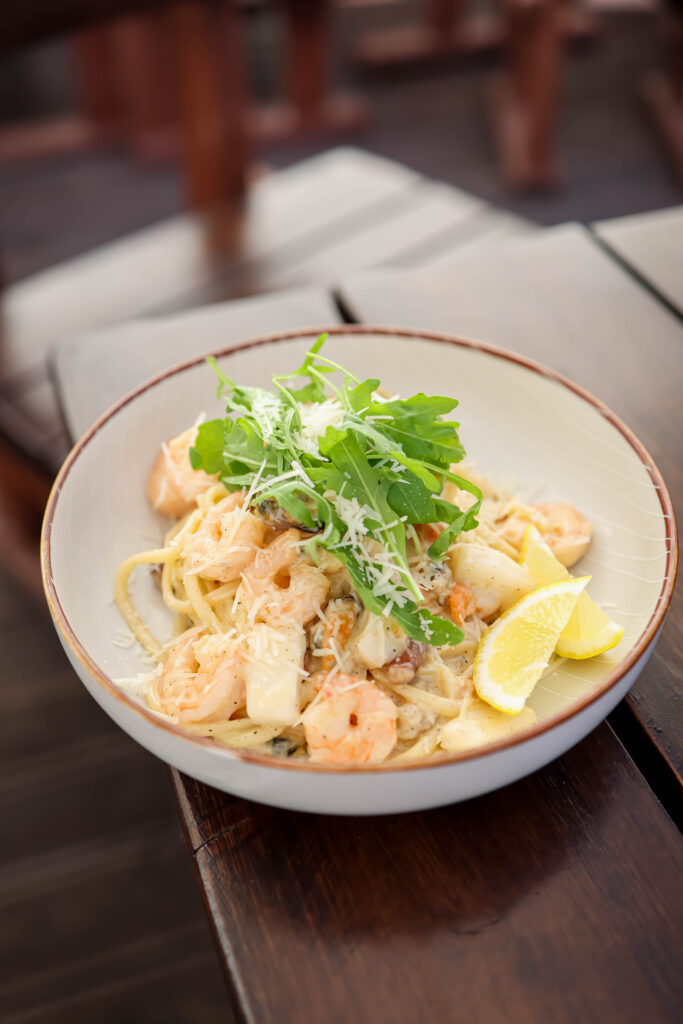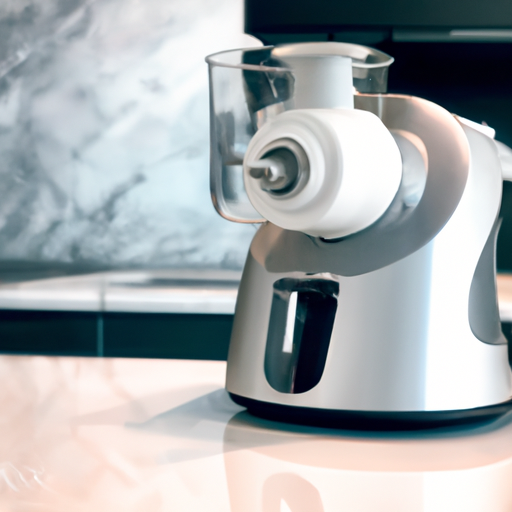Are you tired of spending hours in the kitchen, chopping, dicing, and blending ingredients? Look no further than the trusty food processor! In this article, we will explore the world of food processors and guide you in mastering the art of using this essential kitchen gadget. From chopping vegetables to making dips and purees, a food processor can revolutionize the way you cook. Join us as we delve into the ins and outs of food processors, sharing tips, tricks, and recipes to help you create culinary wonders with ease. Say goodbye to tedious kitchen tasks and hello to a seamless and enjoyable cooking experience.

Choosing the Right Food Processor
When it comes to choosing the right food processor, there are several factors to consider. One of the first things you’ll want to think about is the size and capacity of the machine. If you frequently cook for large gatherings or have a large family, you may want to opt for a larger food processor with a higher capacity. On the other hand, if you have limited counter space or only cook for one or two people, a smaller, more compact food processor may be a better fit for your needs. It’s important to choose a size and capacity that will meet your cooking demands without taking up too much space in your kitchen.
Another important consideration is the power and speed options of the food processor. The power of the motor will determine how effectively the machine is able to process different ingredients. If you plan on using your food processor for heavy-duty tasks like kneading dough or grinding tough ingredients, you’ll want to look for a model with a powerful motor. Additionally, different speed options can provide greater control when processing different types of foods. Some recipes may require a slow speed for gentle processing, while others may require a higher speed for quicker results. Having a food processor with variable speed options can give you greater versatility in the kitchen.
Blade quality and types are also crucial to consider when choosing a food processor. Stainless steel blades are preferred for their durability and ability to withstand heavy use. Look for a food processor that has sharp, high-quality blades that can handle a variety of tasks. Additionally, consider the types of blades that come with the food processor. Different blades are designed for different functions, such as chopping, mincing, pureeing, and shredding. It’s important to choose a food processor that offers a variety of blade options to suit your cooking needs.
Lastly, take a look at the additional features offered by the food processor. Some models come with extra attachments and accessories that can expand the functionality of the machine. For example, a food processor with a citrus juicer attachment can be a great addition if you enjoy making fresh juices. Other features to consider include pulse function for greater control over food processing, a large feed tube for easy feeding of larger ingredients, and a safety lock system for added security. Think about the features that would be most useful to you in your cooking endeavors and choose a food processor that offers those options.
Understanding Food Processor Functions
Food processors offer a wide range of functions that can make your cooking experience more efficient and enjoyable. Understanding these functions will help you optimize your use of the machine and achieve the best results.
Chopping and mincing are two common functions of a food processor. Whether you’re chopping onions, garlic, or herbs, a food processor can save you time and effort. The sharp blades of the machine quickly and evenly chop the ingredients, giving you consistent results every time. Mincing can be achieved by pulsing the machine, allowing you to control the size of the minced pieces.
Pureeing and blending are useful functions for creating smooth sauces, soups, and dips. With a food processor, you can easily transform ingredients like cooked vegetables, fruits, or nuts into a creamy, smooth consistency. The high-power motor and sharp blades of the food processor ensure that even the toughest ingredients are blended to perfection.
Grinding and shredding are functions that can be helpful for a variety of recipes. Whether you’re making homemade breadcrumbs, grinding coffee beans, or shredding cheese, a food processor can handle these tasks with ease. The different blade options and variable speed settings allow you to achieve the desired texture and consistency for your recipe.
Kneading and mixing are functions that are particularly beneficial for baking enthusiasts. With a food processor, you can easily knead dough for bread, pizza, or pastry. The powerful motor and dough blade attachment ensure that the dough is thoroughly mixed and properly developed, saving you time and effort compared to kneading by hand.

Using Your Food Processor Safely
When using a food processor, it’s important to prioritize safety to prevent accidents and injuries. By following some basic safety guidelines, you can ensure a safe and enjoyable cooking experience.
Proper assembly and disassembly are crucial for the safe operation of a food processor. Before using the machine, make sure all parts are correctly fitted and securely locked into place. Improper assembly can lead to the machine malfunctioning or posing a safety risk. Similarly, when disassembling the machine for cleaning or storage, take care to follow the manufacturer’s instructions to avoid any accidents.
Safety precautions should also be taken when handling the blades and attachments of a food processor. The blades are sharp and can cause serious injuries if not handled properly. Always use caution when removing or installing blades, and be sure to keep your hands away from the blade while the machine is in use. It’s also important to handle attachments with care and avoid placing them near the blades when not in use.
Processing hot or liquid foods requires special attention to prevent burns or spills. When processing hot ingredients, allow them to cool slightly before placing them in the food processor to avoid steam burns. Additionally, be mindful of the maximum liquid capacity of the machine and avoid overfilling. If you need to process a larger quantity of liquid, do it in batches to prevent spills and ensure safe processing.
Food Processor Techniques and Tips
To make the most out of your food processor, it’s helpful to familiarize yourself with different techniques and tips for optimal results. Here are some techniques and tips to keep in mind:
Choosing the right technique for different ingredients can greatly impact the final outcome. For example, when chopping softer ingredients like herbs, a pulsing technique with short bursts of power is often sufficient. On the other hand, harder ingredients like nuts or vegetables may require continuous processing to achieve the desired texture. Experiment with different techniques to find what works best for your specific ingredients.
Achieving the desired texture and consistency is key when using a food processor. For smoother results, process the ingredients for longer or use the puree or blend functions. If you prefer a chunkier texture, pulse the ingredients instead of continuous processing. It’s important to keep an eye on the processing progress and adjust the time accordingly to achieve the desired result.
Preventing over-processing or under-processing can be a challenge, especially when working with delicate ingredients. To prevent over-processing, start with shorter processing times and check the progress frequently. You can always continue processing if needed, but it’s difficult to reverse the effects of over-processing. On the other hand, if you find that your ingredients are under-processed, you can always pulse or blend them for a little longer until the desired texture is achieved.
Cleaning and maintaining your food processor is essential for its longevity and optimal performance. After each use, disassemble the machine and wash the parts thoroughly with warm, soapy water. Pay special attention to the blades and attachments, ensuring all food residue is removed. For stubborn stains or residue, you can use a brush or sponge. Allow all parts to air dry completely before reassembling the machine or storing it away.

Time-saving Food Processor Recipes
Food processors are excellent tools for saving time in the kitchen. Here are some time-saving recipes that you can easily prepare using a food processor:
Healthy smoothies and drinks are a great way to start your day or enjoy a refreshing snack. With a food processor, you can quickly blend together your favorite fruits, vegetables, and other ingredients to create delicious and nutritious smoothies. Simply chop the ingredients into smaller pieces, add them to the food processor, and blend until smooth.
Homemade salsas and dips can be made in a matter of minutes with the help of a food processor. Whether you’re craving a classic tomato salsa or a creamy avocado dip, the food processor can make the preparation effortless. Chop the ingredients and add them to the processor, pulse until desired consistency is achieved, and you’ll have a flavorful dip or salsa ready to enjoy.
Freshly ground nut butters are a healthier and more flavorful alternative to store-bought options. With a food processor, you can easily transform roasted nuts into smooth and creamy nut butter. Simply add the nuts to the processor, process until creamy, and enjoy your homemade nut butter on toast, in smoothies, or as a dip.
Homemade bread crumbs and grated cheese can elevate your dishes and add a personal touch. Instead of buying pre-packaged bread crumbs or grated cheese, make your own using a food processor. Simply tear bread into smaller pieces, add them to the processor, and pulse until desired consistency is achieved. For grated cheese, cut the cheese into smaller chunks and process until finely grated.
Creative Ways to Use Your Food Processor
In addition to the standard functions, there are countless creative ways to utilize your food processor. Here are some ideas to inspire your culinary creativity:
Making homemade nut flours and meal is a versatile way to add flavor and texture to your dishes. With a food processor, you can easily grind nuts into fine powders or coarser meal. Use nut flour as a gluten-free alternative in baking or as a flavorful coating for proteins. Coarsely ground nuts can add a crunchy element to baked goods or be used as a topping for salads or desserts.
Creating fresh pestos and sauces is a breeze with a food processor. Traditional basil pesto, roasted red pepper sauce, or tangy chimichurri can all be prepared quickly and easily. Simply process your desired ingredients with herbs, garlic, oil, and any other seasonings until smooth. The food processor ensures all flavors are well-combined, resulting in delicious homemade sauces.
Whipping up homemade mayonnaise and dressings allows you to customize flavors and avoid additives. With a food processor, you can achieve creamy and emulsified dressings in minutes. Combine ingredients like egg yolks, mustard, lemon juice, and oil in the food processor and process until thick and creamy. Experiment with different flavor combinations to create your own signature dressings and mayo.
Preparing homemade baby food is a wonderful way to ensure your little one gets the best nutrition. With a food processor, you can easily puree fruits, vegetables, and even cooked meats to the desired consistency. Simply steam or cook the ingredients until soft, add them to the food processor, and process until smooth. Homemade baby food allows you to control the quality and ingredients, giving you peace of mind.
Troubleshooting Common Food Processor Issues
While food processors are generally reliable kitchen appliances, there can be some common issues that arise. Understanding these issues and how to troubleshoot them can save you from frustration and help extend the lifespan of your machine.
If you find that food is sticking to the sides of the food processor, it may indicate that the ingredients are too dry or too large. Consider adding a liquid component to the mixture to provide moisture and help the ingredients move more freely. You can also try cutting the ingredients into smaller pieces before processing to ensure they are evenly distributed.
Uneven chopping or processing can occur if the ingredients are not evenly distributed in the food processor or if the blades are dull. Make sure to distribute the ingredients evenly in the bowl before processing and avoid overfilling the bowl. Dull blades can also result in uneven processing, so it may be time to sharpen or replace them if this issue persists.
Motor overheating or unusual noises can be an indication of an overloaded machine or mechanical issues. If you’re processing a large quantity of tough ingredients or using the food processor for an extended period of time, the motor can overheat. In this case, turn off the machine and allow it to cool down before continuing. If the overheating or unusual noises persist, it’s a good idea to contact the manufacturer or have a professional inspect the machine.
Difficulties in assembling or disassembling can occur if the parts are not aligned properly or if there is food residue preventing smooth movement. Make sure to align the parts correctly and lock them into place according to the manufacturer’s instructions. After each use, thoroughly clean all parts and remove any food residue that may be causing difficulties.
Food Processor Maintenance and Care
Proper maintenance and care are essential for keeping your food processor in optimal condition and extending its lifespan. By following some simple practices, you can ensure that your machine continues to perform at its best.
Proper cleaning and storage are key to prevent the buildup of food particles and maintain the integrity of the machine. After each use, disassemble the food processor and wash all detachable parts with warm, soapy water. Pay special attention to the blades and attachments, ensuring all residue is removed. Allow the parts to air dry completely before reassembling or storing them. It’s also a good idea to wipe down the motor base with a damp cloth to remove any spills or stains.
Replacing worn-out parts is important to maintain the performance and safety of your food processor. Over time, the blades may become dull or the attachments may wear out. If you notice a decline in performance or see signs of damage, such as cracks or breaks, it’s time to replace the worn-out parts. Contact the manufacturer or check the user manual for guidance on ordering replacement parts.
Regular maintenance practices can help keep your food processor running smoothly. This includes lubricating any moving parts as recommended by the manufacturer and inspecting the machine for any signs of wear or damage. Keep the machine stored in a dry and dust-free area to prevent any buildup of dirt or debris that could affect its performance.
By taking care of your food processor and following these maintenance practices, you can ensure that it remains a reliable and efficient kitchen companion for years to come.
Upgrading to a High-Quality Food Processor
There may come a time when you consider upgrading your food processor to a high-quality model. Whether your current machine no longer meets your cooking needs or you simply want to enjoy the benefits of a more advanced appliance, there are factors to consider when making the upgrade.
Knowing when to consider upgrading is important. If you’re finding that your current food processor is unable to handle the tasks you need it for, it may be time to upgrade. Additionally, if you’ve had your food processor for a long time and it’s showing signs of wear or declining performance, upgrading to a newer model can provide you with improved functionality and features.
When looking for a high-quality food processor, there are certain features to prioritize. Consider the power of the motor, as a more powerful motor will allow you to process tougher ingredients with ease. Look for a food processor that offers variable speed options for greater control over food processing. High-quality materials, such as stainless steel blades and sturdy construction, are also important for durability and longevity.
Comparison of top food processor brands can help you make an informed decision. Research different brands, read reviews, and compare features to find a brand that consistently delivers high-quality products. Pay attention to customer satisfaction, warranty information, and after-sales support to ensure you’re investing in a reputable brand.
If budget is a concern, there are still budget-friendly options available that can offer good performance and functionality. Consider the features that are most important to you and prioritize them when choosing a budget-friendly food processor.
Upgrading to a high-quality food processor can greatly enhance your cooking experience and provide you with more versatility in the kitchen. Take the time to research and compare options to find the best fit for your culinary needs and preferences.
Conclusion
In conclusion, choosing the right food processor is essential for efficient and enjoyable cooking. Consider factors like size, capacity, power, and additional features when making your decision. Understanding the various functions of a food processor will help you make the most of this versatile kitchen appliance. Prioritize safety when using your food processor, ensuring proper assembly, and following safety precautions. Learn and apply various techniques and tips to achieve the desired texture and consistency in your recipes. Explore time-saving recipes and creative ways to use your food processor to expand your culinary repertoire. Troubleshoot common issues and practice proper maintenance and care to prolong the lifespan of your food processor. When the time comes, consider upgrading to a high-quality food processor that meets your cooking needs and preferences. With the right food processor by your side, you can master the art of food processing and elevate your culinary creations.

